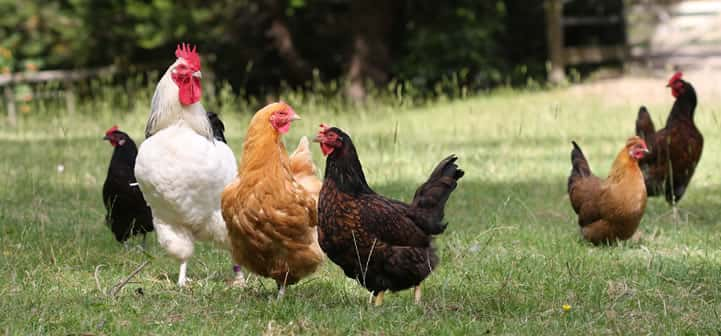Helena, Mont. – On Tuesday, March 17, the Montana Department of Livestock (MDOL) confirmed Highly Pathogenic Avian Influenza (HPAI) in a backyard poultry flock in Gallatin County. This is Montana’s first detection in domestic poultry of the year and the state’s 30th affected flock linked to the ongoing national outbreak which began in 2022.
Avian influenza is an infectious viral disease of birds that can cause high death loss in domestic flocks. Sick birds can exhibit numerous signs such as swollen eyes, discolored comb and legs, or a significant drop in egg production or water and feed consumption. However, the most consistent presentation has been the sudden death of multiple birds within a flock. The Gallatin County flock reported the loss of 6 birds in a 24-hour period.
Migratory waterfowl are the primary source of the virus and infections in domestic poultry are often associated with spring and fall migrations. Domestic poultry may become infected through direct contact with infected wild birds, or through contact with contaminated objects, equipment, or the environment. MDOL recommends poultry owners house birds indoors to the extent possible and continue enhanced biosecurity measures to minimize disease risk through the spring migration.
HPAI has been confirmed in multiple other species associated with this outbreak, most notably in dairy cattle. Montana has not had any cases of HPAI in dairy cattle and MDOL is working closely with Montana’s dairy industry to conduct monthly surveillance. Test results from this detection are consistent with a wild bird introduction.
“We appreciate the work our poultry and dairy owners have done to minimize the risk of disease introduction and spread,” said Tahnee Szymanski, State Veterinarian. “Biosecurity is labor intensive and often inconvenient, but important to protect both animal and human health.”
HPAI is a potentially zoonotic disease with 74 human cases reported nationally. The Centers for Disease Control (CDC) continues to consider the public health risk to the general population from this virus to be low, however, the risk is moderate to high for individuals in contact with potentially infected animals or environments. Public health officials recommend wearing gloves when handling sick or dead birds and washing hands thoroughly after contact with poultry.
HPAI is not a food safety concern. Existing safeguards to keep food, safe and wholesome, including the pasteurization of milk, are sufficient to protect people, and the food supply in the United States is one of the safest in the world. As a reminder, the United States Department of Agriculture (USDA) recommends cooking poultry to 165 degrees Fahrenheit.
The Department encourages all poultry producers to immediately report sudden onset of illness or high death loss in domestic poultry to their veterinarian or MDOL at (406/444-2976). If you find sick or dead wild birds that have died from unknown causes, please contact your local Fish, Wildlife, and Parks Warden, Biologist or Regional office, or call the FWP wildlife veterinarian (406/577-7880). Additionally, dairy producers who observe a sudden decrease in milk production, decreased appetite, fever, respiratory disease or loose feces that cannot be otherwise explained are encouraged to report to their veterinarian or MDOL. Raw milk from sick cows should not be consumed.
The mission of the Montana Department of Livestock is to control and eradicate animal diseases, prevent the transmission of animal diseases to humans, and to protect the livestock industry from theft and predatory animals. For more information, visit www.liv.mt.gov.
###
Montana Department of Livestock


